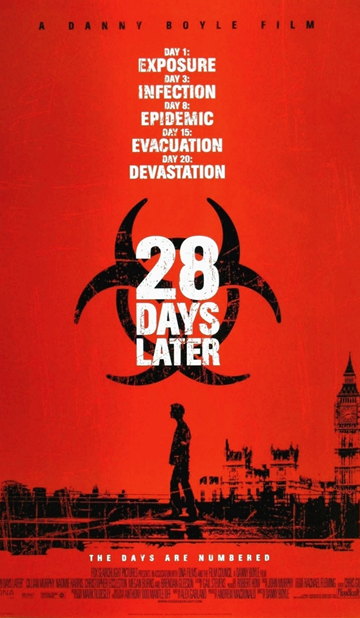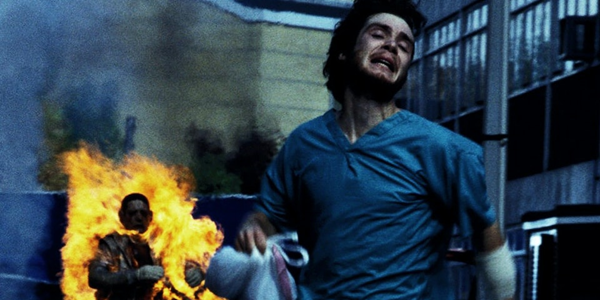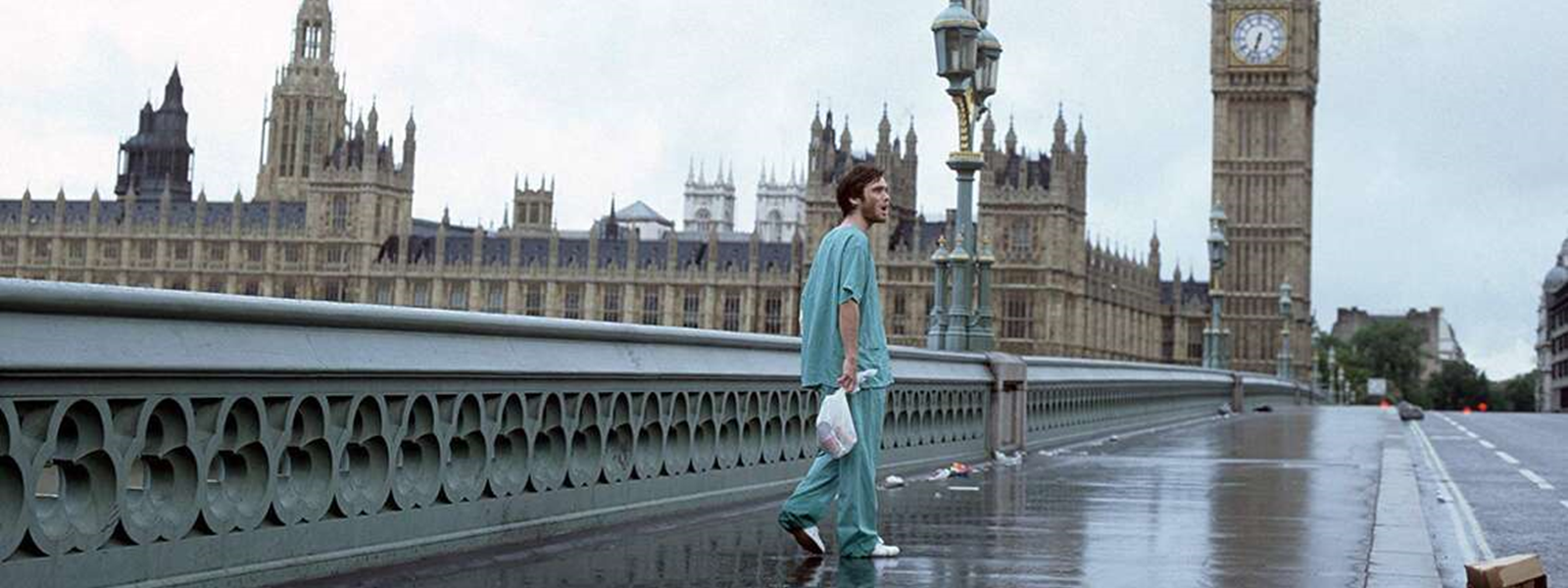
28 Days Later
- Brendan Gleeson, Christopher Eccleston, Cillian Murphy, Naomie Harris
- Danny Boyle
- Drama, Horror, Sci-fi
- November 1, 2002
- English
Synopsis
After a mysterious virus wreaks havoc in the United Kingdom, a team of survivors tries to cope with the aftermath of the disaster and find security.
Review

28 Days Later used to hold the candle for one of my favourite zombie horror movies but having now sat down to watch the movie in preparation for writing this review, I am conflicted. The main reason for this, is that the movie has not aged well. Now, you can argue that this is due to multiple reasons, the technology/quality of cameras back when the film was made, a low budget or it was an artistic style choice by Danny Boyle but at times the movie feels like a well-made student film.
However, this also adds a grittier sense of realism that almost gives the movie a documentary feel to what we are watching and due to this, the scenes with the infected creates a heightened sense of fear. The image quality did not ruin the overall viewing experience for me, but some might be put off by this. And whilst on the topic of camera work, there are many close-up shots throughout the movie which makes the action feel visceral but also difficult to see what’s happening at times.
What makes 28 Days Later stand apart of the abundance of zombie movies being made is its use of practical effects over CGI. Most modern zombie flicks will have a horde of the undead using CGI and I personally lose that feeling of anxiety that you want from a horror movie as soon as my mind registers that what I am watching looks fake. So, the actor’s performances, the make-up and the on-location filming makes the movie more terrifying.
28 Days Later opens with news footage of extreme violence and this immediately creates a sense of unease. There is no slow build up and what I found clever was how quickly the infection spreads. We are told that victims turn into the rage filled monsters within 20 seconds, meaning no one can hide that they are infected and as the audience we should not get too invested in the characters. The movie at times does create a false sense of peace such as the convenience store scene which is short-lived and quickly turns back into chaos.
The most memorable scene in the movie is Jim (Cillian Murphy) waking up and walking through the abandoned streets of London. There is a feeling of emptiness: with no special effects, no grand action set pieces, just a lifeless, empty city with constant danger lurking around every corner. The soundtrack is also eerie, British Composer John Murphy did a brilliant job with the score ‘In the house, in a heartbeat’ because it’s a creepy piece of music that gradually intensifies as the action on screen does.
The movie does end on a positive note, so a sequel was not necessary, but you can’t help wanting to know where the story goes. Overall, 28 Days Later is good piece of British cinema but unfortunately it did not live up to my own high expectations from previous viewings.

